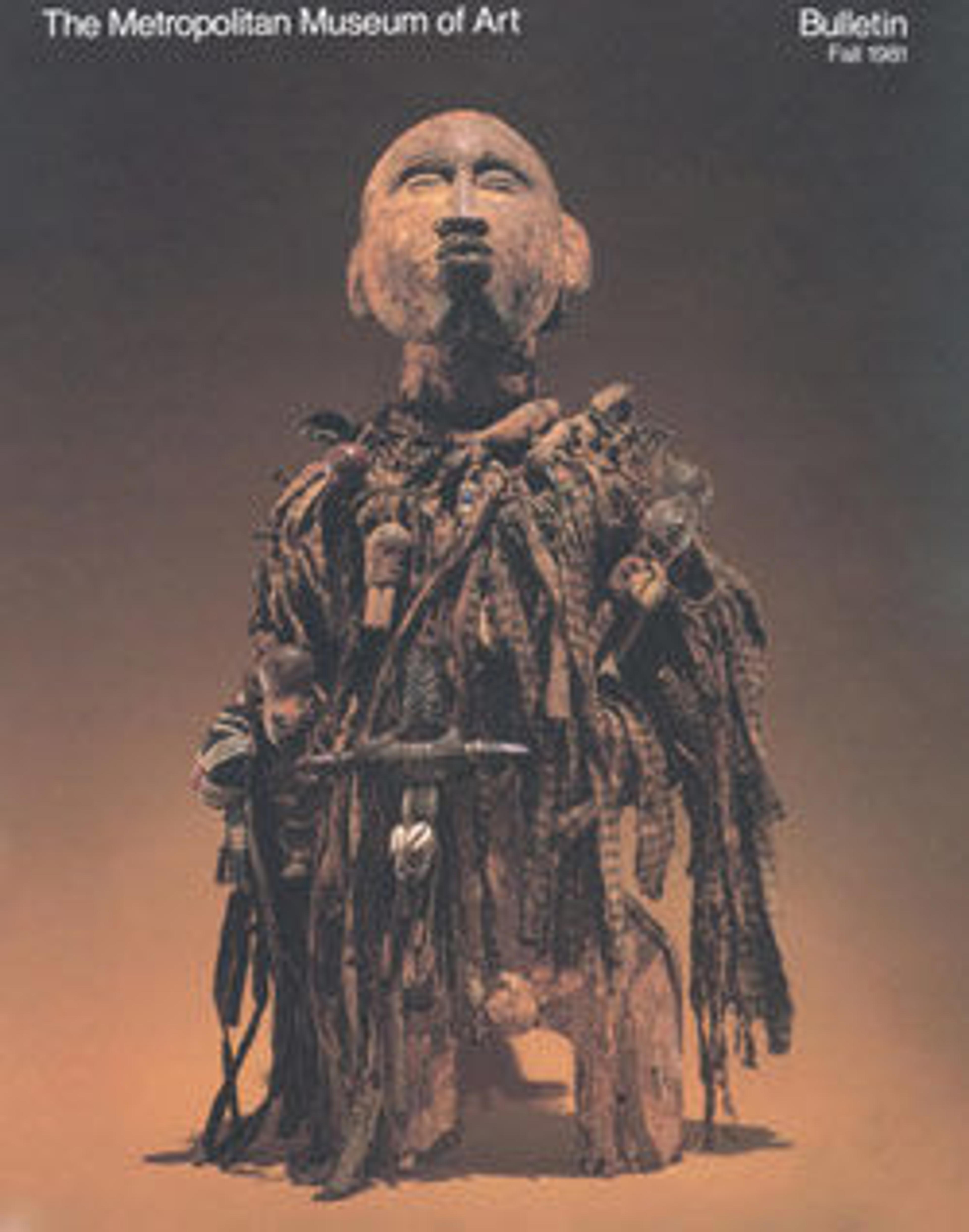Kifwebe bakashi (female mask)
Certain masking traditions of the Congo River basin personify local control of mystical power. Striated face masks known as kifwebe probably originated in North Shaba, an area inhabited by both Songye and Luba groups. Significant departures in the role and formal interpretation of this art form subsequently developed in each culture. Among the small Songye chiefdoms along the Lomami River, maskers were emissaries of the ruling elite, who relied on the ideology of witchcraft and sorcery to sustain their rule. These kifwebe members commanded a body of esoteric secret knowledge visually encoded mnemonically in the mask's features. Hierarchical distinctions between a single female mask and an unlimited number of male masks are reflected in color and in sculptural features.
Artwork Details
- Title:Kifwebe bakashi (female mask)
- Artist:Songye artist
- Date:19th–early 20th century
- Geography:Democratic Republic of the Congo, Lomami River region (?)
- Culture:Songye peoples
- Medium:Wood, pigment
- Dimensions:H. 17 1/2 x W. 11 1/8 x D. 7 3/8 in. (44.5 x 28.2 x 18.7 cm)
- Classification:Wood-Sculpture
- Credit Line:The Michael C. Rockefeller Memorial Collection, Bequest of Nelson A. Rockefeller, 1979
- Object Number:1979.206.83
- Curatorial Department: The Michael C. Rockefeller Wing
More Artwork
Research Resources
The Met provides unparalleled resources for research and welcomes an international community of students and scholars. The Met's Open Access API is where creators and researchers can connect to the The Met collection. Open Access data and public domain images are available for unrestricted commercial and noncommercial use without permission or fee.
To request images under copyright and other restrictions, please use this Image Request form.
Feedback
We continue to research and examine historical and cultural context for objects in The Met collection. If you have comments or questions about this object record, please contact us using the form below. The Museum looks forward to receiving your comments.
